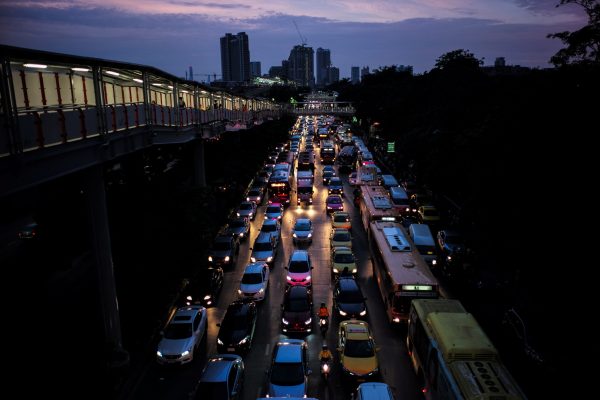The scale of change in Asia is immense. In 1990, more than 80 per cent of the world’s population living below the extreme poverty line (estimated at US$1.90 per day, measured at purchasing power parity) were either in East Asia and the Pacific, or South Asia. Today that number is far smaller and getting smaller still. By 2030, just 0.1 per cent of the population of East Asia is expected to live below the extreme poverty line. In South Asia the figure will be only 2 per cent.
Put another way, half of the world’s population in 2025 will likely live in Asian middle-income countries. Today, almost all of the region’s nations already enjoy middle-income status. And more are moving beyond US$4000 per capita income, signifying a shift from lower middle-income to upper middle-income status. By 2025, only Afghanistan and Nepal are expected to remain officially poor.
This progress is positive. Millions have been lifted out of extreme poverty over the past decade alone, with just as many now benefitting from improved education and health. But it also requires a rethink of the policy obstacles that Asian countries must now overcome, and the way in which they interact with bilateral and multilateral development institutions.
Middle-income status does not mean development gets suddenly easier. While Asia’s growth still outpaces global growth, it has slowed since the global financial crisis. This has led some to argue that Asia is facing a middle-income trap, where growth slows after reaching middle-income levels and the transition to high-income levels seems a distant prospect. Malaysia and Indonesia are often mentioned as examples.
Equally worrying is that several middle-income Asian economies suffer from persistent pockets of poverty, while their people remain vulnerable to sudden changes in income. Some countries continue to confront fragile situations associated with long-term and often subnational conflict. Afghanistan has seen three decades of armed conflict between the government and the Taliban, while Myanmar is engulfed in a crisis involving the Rohingya people.
Ageing populations are another challenge, particularly in China, South Korea and East Asia. This will translate into rising dependency ratios, increasing elderly care costs and probably higher taxation.
Moving nations out of extreme poverty also tells us little about the extent to which their people are vulnerable to falling backwards. This vulnerable group of people — those who hover precariously above the poverty line but do not advance quickly towards middle-class status — is expanding in Asia. In countries from India to Indonesia to the Philippines and Bangladesh, this category now covers hundreds of millions of citizens.
Although growth has lifted millions above the breadline, the quality of that growth has not always been pro-poor. Recent decades of growth have often exacerbated income inequality levels across Asia. Gini coefficients (a common measure of income equality) have declined in Bangladesh, Cambodia, India, Sri Lanka, Vietnam and Papua New Guinea.
Tackling these challenges requires different policies by governments in Asia, both to continue to push growth but also to make it more equitable. Improving innovation, tertiary and vocational education, financial access for small businesses, elderly care and pensions systems, infrastructure and institutions can help put Asia on the path to developed, high-income status. These policies should be tailored to individual national circumstances. The days of a one-size fits all development model are over.
Asia’s new middle-income era also poses questions for development institutions. Improved income status means Asia’s development finance landscape is quickly changing. As countries become wealthier the sources of finance and financial instruments available to them will change, as will the volumes of aid they receive and the conditions attached to it. Borrowing from international capital markets will become crucial, with rating agencies influencing the terms on which they can do so.
Middle-income status is often considered a signal for a successful development trajectory — hence the rationale for development institutions to play a progressively smaller role. But development institutions should not move from an aid relationship with Asia to simply no relationship at all.
Instead, they need to create a new and different kind of relationship, based at first on a mixture of aid and trade, and eventually trade and private investment alone — in the process finding new ways to help transform Asian nations whose development journeys are only at most mid-way complete.
Ganeshan Wignaraja is Executive Director of the Lakshman Kadirgamar Institute of International Relations and Strategic Studies (LKI) in Colombo. This article was prepared in advance of Dr Wignaraja’s appearance at the Asia in the World Economy Roundtable 2018, hosted at the Lee Kuan Yew School of Public Policy in Singapore from 29–30 November.

